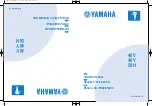
EVGA B360 Micro Gaming (112-CS-E365)
- 14 -
9. M.2 Socket 1 Key-E 32mm
M.2 Key-E sockets are generally used for WiFi and Bluetooth cards. Key-E and
Key-M connectors are different, meaning that devices are not interchangeable
between sockets. This socket is CNVi-Ready.
10. PCIe Slot x16*
PCIe x16 slots are primarily used for video cards. These full-length slots will
provide 8 or 16 lanes of bandwidth to a full-size card, and are backwards-
compatible with x8, x4, and x1-length cards.
Coffee Lake-S Socket LGA1151 processors have 16 PCIe lanes available for
routing.
11. PCIe Slot x4*
PCIe x4 slot PE3 uses up to 4 Gen 3 lanes from the PCH. This slot is typically
used for sound cards, WiFi, USB, LAN or other peripheral cards.
Using this slot will have no effect on the bandwidth or throughput of PE1
because this slot uses only PCH bandwidth.
12. PCIe Slot x1
PCIe x1 is the smallest form-factor PCIe card slot. They are all one lane and
are used for low-bandwidth products.
13. Clear CMOS Jumper Posts
The motherboard uses CMOS RAM to store set parameters. Clear CMOS by
bridging the two posts with a jumper or metallic object, such as a screwdriver.
This feature has two main uses: The first is to clear BIOS and power on before
updating the BIOS, and the second is to troubleshoot when the motherboard
fails to POST (e.g. after upgrading RAM or CPU, adding new hardware, a failed
overclock, etc.). These posts provide a much faster means of resetting CMOS
than removing the CMOS battery and discharging power to the board.
14. CMOS Battery
The +3V CMOS battery backup provides uninterruptable power to the
BIOS/UEFI to keep all of the settings; otherwise, each boot would behave like
you just reset the BIOS. These batteries typically last several years and rarely
need to be replaced.
15. USB 3.1 Gen 1 Header
The USB 3.1 Gen 1 headers are used to connect additional USB interface plugs
to the motherboard; these headers are most often used to connect the















































